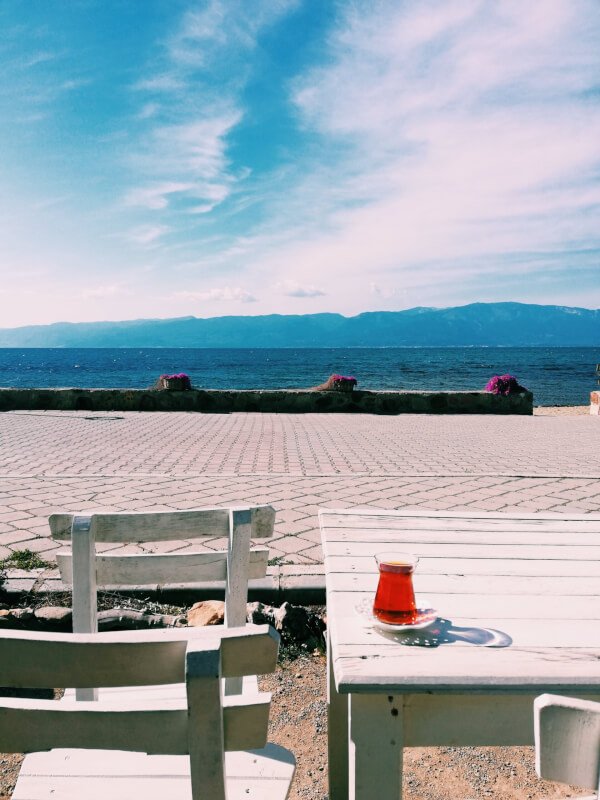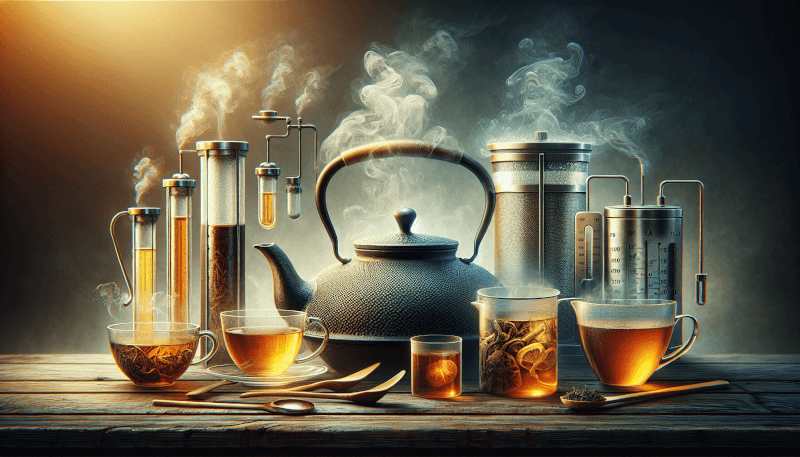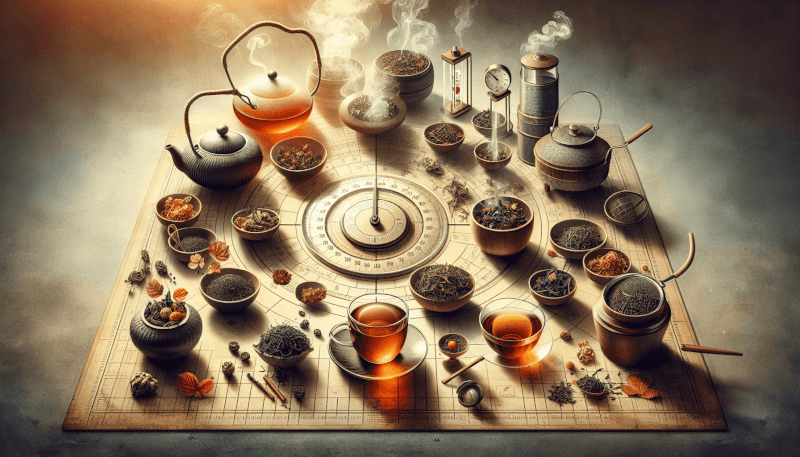Tea enthusiasts rejoice! In this article, you will have the opportunity to discover a plethora of tea brewing techniques that will take your aromatic experience to new heights. From traditional methods that have stood the test of time to innovative approaches that are sure to entice your taste buds, you will delve into the world of tea brewing like never before. Get ready to embark on a delightful journey of tantalizing aromas and flavors that will elevate your tea-drinking experience to a whole new level. So grab your favorite tea leaves and let’s begin this aromatic adventure together!
Introduction to Tea Brewing Techniques
Tea has been enjoyed for centuries, and throughout history, various brewing techniques have been developed to enhance its aroma and flavor. In this article, we will delve into the world of tea brewing and explore the different techniques that can be employed to achieve a more aromatic and satisfying cup of tea.
Understanding the importance of aroma in tea
The aroma of tea is one of the key factors that contribute to its overall taste experience. The pleasant and enticing scent can awaken our senses and create anticipation for the first sip. The aroma is a result of the volatile compounds present in tea leaves, which are released when hot water is poured over them during the brewing process. By understanding the importance of aroma in tea, we can better appreciate the nuances and complexities of different tea varieties.
Overview of different tea brewing techniques
There are several brewing techniques that can be utilized to enhance the aroma of tea. Each technique has its own unique approach and can result in a distinct sensory experience. In the following sections, we will explore different brewing techniques, including traditional steeping, Gongfu brewing, scented tea brewing, cold brewing, and the use of tea infusers and strainers. By familiarizing yourself with these techniques, you can experiment and find the method that best suits your taste preferences.
Choosing the Right Tea Leaves
When it comes to brewing tea with enhanced aroma, selecting high-quality tea leaves is crucial. The quality of the leaves will greatly influence the final result of your brew and the intensity of its aroma. Here are some tips for selecting high-quality tea leaves:
Selecting high-quality tea leaves
Opt for loose-leaf tea instead of tea bags, as loose-leaf tea tends to have a higher quality and more pronounced aroma. Look for tea leaves that are whole and intact, as broken leaves may have diminished aroma. Additionally, choose tea leaves that have been harvested recently for the freshest and most vibrant flavors.
Exploring different types of tea leaves
There are various types of tea leaves available, each with its own unique aroma profile. Green tea, for example, is known for its fresh and grassy aroma, while black tea offers a robust and aromatic experience. Oolong tea falls somewhere in between, with its complex and floral fragrance. By exploring different types of tea leaves, you can discover the aromas that resonate with you the most and tailor your brewing techniques accordingly.

Understanding Water Temperature
Water temperature is a critical factor in tea brewing, as it directly affects the release of aroma compounds from the tea leaves. Different types of tea require different water temperatures to maximize their aromatic potential. Here’s a closer look at the impact of water temperature on tea aroma:
Impact of water temperature on tea aroma
Hot water acts as a catalyst in the extraction of flavors and aromas from tea leaves. The temperature of the water affects how quickly these compounds are released and can impact the overall aroma and taste of the tea. Using water that is too hot can result in a bitter brew, while water that is too cool may not fully extract the desired aromas.
Different temperature ranges for various types of tea
It is important to adjust the water temperature based on the type of tea you are brewing. Generally, green teas are best brewed with water temperatures between 160°F and 180°F (70°C to 82°C). Black teas, on the other hand, can be brewed with water temperatures around 200°F (93°C). Oolong teas typically require water temperatures between 190°F and 200°F (88°C to 93°C). By adhering to the appropriate water temperature for your chosen tea, you can ensure optimal aroma extraction.
Traditional Steeping Method
The traditional steeping method is one of the most common and accessible techniques for brewing tea. It is simple and straightforward, making it suitable for both beginners and seasoned tea enthusiasts. Here is a step-by-step guide to traditional steeping:
Step-by-step guide to traditional steeping
- Boil water to the appropriate temperature for your chosen tea.
- Measure the desired amount of tea leaves based on your preference and the size of your teapot or cup.
- Place the tea leaves into a teapot or tea infuser.
- Pour the hot water over the tea leaves, ensuring they are fully submerged.
- Allow the tea to steep for the recommended time. This can vary depending on the type of tea, so refer to the packaging or consult a tea brewing guide for specific steeping times.
- Once the steeping time is up, remove the tea leaves or tea infuser to prevent over-extraction.
- Pour the tea into cups and enjoy the aromatic brew.
Tips for enhancing aroma during traditional steeping
To further enhance the aroma during traditional steeping, consider pre-warming your teapot or teacups with hot water. This helps to maintain the optimal brewing temperature and prevent the tea from cooling too quickly. Additionally, try experimenting with the tea-to-water ratio and steeping times to find your preferred balance of aroma and flavor.

Gongfu Brewing Technique
Originating from China, the Gongfu brewing technique is a traditional and elaborate method of brewing tea that allows for maximum aroma extraction. It requires specialized equipment and a careful approach. Here’s a closer look at Gongfu brewing:
Exploring the origins of Gongfu tea brewing
Gongfu tea brewing has a rich history and is deeply rooted in Chinese tea culture. The term “Gongfu” translates to “skill” or “effort” in English, highlighting the meticulousness and patience required to execute this brewing method. It originated during the Ming Dynasty and has since become a popular way to brew tea, particularly oolong and Pu-erh teas.
Equipment and steps involved in Gongfu brewing
Gongfu brewing typically involves the use of a small teapot or gaiwan, which allows for multiple infusions of tea leaves. The process begins with rinsing the tea leaves with hot water to awaken their aromas. The tea is then steeped multiple times, each infusion lasting only a few seconds to extract the optimal flavors and aromas without bitterness. The resulting brew is highly concentrated and aromatic, offering a truly immersive tea experience.
Scented Tea Brewing Method
Scented teas add an extra layer of fragrance and complexity to the tea experience. These teas are infused with flowers, herbs, or fruits, imparting their unique aromas into the leaves. Here’s an introduction to scented teas and techniques for brewing them to enhance their aroma:
Introduction to scented teas
Scented teas, such as Jasmine tea and Rose tea, have a long history and are beloved for their enchanting aromas. Jasmine tea, for example, combines the delicate flavors of green tea with the captivating fragrance of jasmine flowers. The process of scenting involves exposing the tea leaves to the scent source multiple times, allowing the leaves to absorb the aromas.
Techniques for brewing scented teas to enhance aroma
To fully enjoy the aromatic qualities of scented teas, it is important to use the correct brewing technique. Generally, scented teas require water temperatures similar to their base tea type, such as green tea or black tea. Follow the recommended steeping times provided for the specific scented tea to extract the desired aromas. Pay close attention to the quality of the scented tea leaves, as this can greatly impact the intensity of the aroma.

Cold Brewing Technique
Cold brewing is a method of steeping tea using cold or room temperature water over an extended period. This technique offers a refreshing and aromatic alternative to hot brewed tea. Here are the benefits of cold brewing for aroma and a step-by-step process to try it yourself:
Benefits of cold brewing for aroma
Cold brewing tea can result in a smoother and less astringent taste, while still preserving the delicate aromas of the tea leaves. The slower extraction process allows for a more gradual release of flavors and aromas, resulting in a milder and yet aromatic brew.
Step-by-step process for cold brewing tea
- Place your desired amount of tea leaves in a pitcher or glass container.
- Add cold or room temperature water to the container, using a ratio of approximately 1 teaspoon of tea leaves per 8 ounces of water.
- Stir gently to ensure all the tea leaves are fully immersed in the water.
- Cover the container and refrigerate for at least 4-6 hours, or overnight for a stronger brew.
- Once the desired brewing time has passed, strain the tea leaves and transfer the cold-brewed tea to another container.
- Serve the tea over ice and savor the aromatic flavors.
Using Tea Infusers and Strainers
Tea infusers and strainers are valuable tools for tea enthusiasts who prefer loose-leaf tea. They not only aid in the brewing process but also play a role in enhancing the aroma of the tea. Here’s what you need to know about popular tea infusers and strainers, along with tips for using them:
Popular tea infusers and strainers available
Tea infusers come in various shapes, sizes, and materials. Some popular options include tea balls, tea baskets, and tea sticks. Tea strainers, on the other hand, are typically used to strain the tea leaves out of the brewed liquid. They can be handheld or designed to sit on top of the teacup or teapot. Mesh strainers and micro-perforated infusers are commonly used for their fine filtration.
Tips for using infusers and strainers to enhance aroma
To maximize the aroma extraction, select infusers or strainers with ample space for the tea leaves to expand. This allows for better water circulation and more effective release of the volatile compounds responsible for aroma. Additionally, avoid overstuffing the infuser or strainer, as this can prevent the leaves from fully unfurling and releasing their aromatic qualities.

Exploring Tea Brewing Accessories
Tea brewing accessories can elevate the tea experience while enhancing the aroma of the brew. From teapots to teacups, the right accessories can make a difference. Here’s a closer look at teapots, teacups, and other accessories that can enhance aroma:
Teapots, teacups, and other accessories for enhanced aroma
Teapots come in a variety of materials, each imparting its own unique characteristics to the tea. Ceramic and clay teapots are popular choices for their ability to retain heat and enhance aroma. Teacups with wide openings and thin rims allow for better appreciation and inhalation of the tea’s aroma. Other accessories, such as tea trays and tea pets, can also contribute to the overall ambiance and enjoyment of brewing tea.
Choosing the right accessories based on brewing techniques
Different brewing techniques may require specific accessories. For example, Gongfu brewing is traditionally done with small teapots and small teacups, allowing for multiple infusions and the full expression of the tea’s aromas. Cold brewing, on the other hand, may call for larger pitchers or glass containers to accommodate the longer steeping time. Consider the specific needs of your chosen brewing technique when selecting your tea brewing accessories.
Experimenting with Tea Blends and Additives
For those seeking a truly unique and aromatic tea experience, experimenting with tea blends and additives can be a thrilling endeavor. By combining different tea varieties and introducing various flavorings, you can create personalized blends that showcase enhanced aromas. Here are some ideas for creating unique tea blends and exploring additives to elevate tea aroma:
Creating unique tea blends for enhanced aroma
Blend different types of tea leaves, such as green tea with black tea or oolong with herbal tea, to create interesting and layered aromas. For example, mixing jasmine-infused green tea with a hint of citrus can create a refreshing and fragrant blend. By experimenting with various combinations, you can discover new aromatic profiles that suit your taste preferences.
Exploring additives and flavorings to elevate tea aroma
Additives and flavorings, such as dried fruits, flowers, herbs, or spices, can enhance the aroma of tea blends. Consider adding dried lavender or chamomile flowers to create a calming and aromatic blend. Spices like cinnamon or cardamom can lend warmth and complexity to the tea’s aroma. The possibilities are endless, so don’t be afraid to let your creativity flourish and explore the world of tea aromatics.
In conclusion, exploring different tea brewing techniques can greatly enhance the aroma of your tea and elevate your overall tea experience. From traditional steeping to Gongfu brewing, scented tea brewing to cold brewing, each technique offers a unique approach to aroma extraction. By selecting high-quality tea leaves, adjusting water temperature, and utilizing appropriate brewing accessories, you can maximize the aromatic potential of your tea. And don’t forget to have fun experimenting with tea blends and additives to create your own aromatic masterpieces. So, grab your favorite tea leaves, try out different methods, and embark on a sensory journey through the captivating world of tea.


